
Stranger of Paradise Final Fantasy Origin Review
Chaos, chaos, and even more chaos is the name of the name with Square Enix’s brand new Final Fantasy prequel story, Stranger of Paradise Final Fantasy Origin. This fast-paced action RPG dives into the history of the franchise's very first boss - the Corellian knight Garland.
In Stranger of Paradise, you play as Jack, a generic-looking white guy with anger issues bent on finding and destroying ‘Chaos’, killing any creature or monster that gets in his way. Jack’s powered by a classic RPG trope - amnesia. He doesn’t remember much, but he remembers being angry and wanting to kill chaos. It defines his character, alongside his penchant for seeing off enemies in rather violent and gruesome ways.
Jack is joined from the start by two companions. Jed is your typical light-hearted comedic relief type, while Ash is the group’s dependable, strong figure. During the course of the 20-ish hour experience that is Stranger of Paradise’s story, that party of adventurers expands to include the short and snarky Neon and the more serious specialist Sophia to round out the group. At any time, you can bring two companions with you, though you’re always actually playing as Jack - they’re just AI companions whose actions you can very loosely influence via equipment and the like.
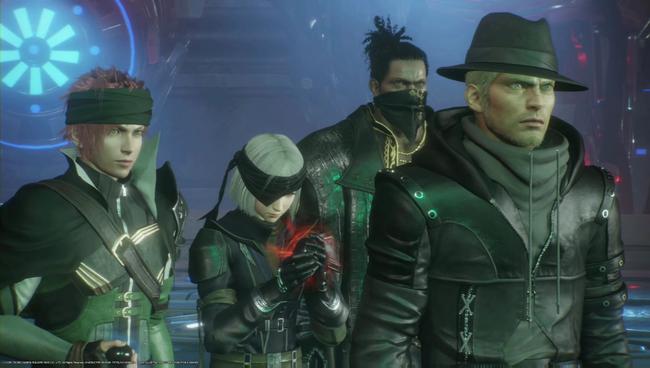
You’d be hard-pressed to call any of these companions deep - they tread well-worn genre and storytelling tropes - but they’re also far more interesting protagonists than our leading man. Jack has few defining character traits. He’s angry, he wants to kill Chaos, and most of the time he thinks remembering things is stupid and pointless - despite being an amnesiac. It’s funny and campy for a while but gets stale fast.
The rest of the ‘Warriors of Light’ that travel with him tend to be more enjoyable, and I found their friendly background banter to be perfectly fine - at times even charming. Of course most of the time, this banter would also include Jack usually putting someone down, or saying something about Chaos, as that stuff is a near-constant.
One special mention has to be given to Astos - a non-party character and relatively minor bit player in the original FF1’s story that receives some of the most additional depth and complexity in Stranger of Paradise. I genuinely found myself moved and surprised by some of the revelations surrounding him, and out of the whole cast, Astos was the one I grew most attached to - something that I’d never have guessed prior to my playthrough.
As mentioned previously, Stranger of Paradise tells the story of events that occurred prior to the original Final Fantasy, adding a strong dose of science fiction elements to the existing high fantasy setting. For a good portion of the game, the goal is very similar to the Final Fantasy, as Jack and the other Warriors of Light are tasked with restoring light to the four elemental crystals by vanquishing the corresponding fiends.
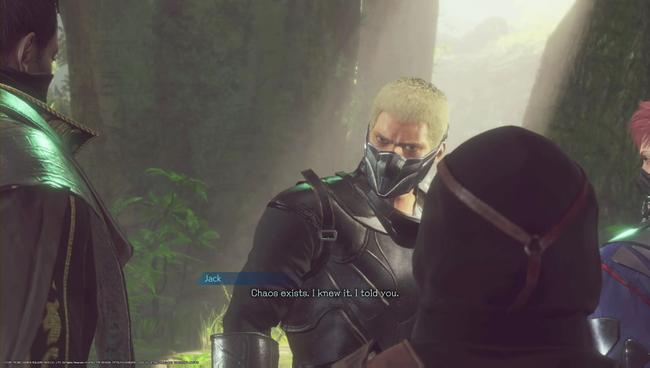
While our heroes are undertaking their quest, a subplot involving a mysterious advanced civilization known as the Lufenians begins to reveal itself, making the Warriors question not only themselves but also the mission they’re on. I don’t think it all hits, and some elements of the ending left me scratching my head, but I did find it to have a satisfactory execution otherwise, given what the game was trying to be. It’s clear this wasn’t aiming for a fully-fledged Final Fantasy narrative, but instead just a fun, if at times ridiculous, romp. It leaves me with enough interest and questions that I’d be interested to return back to Stranger of Paradise when the promised DLC is released to find out the answer.
The various locations you will visit over the course of your quest are contextually within a version of the world of the first Final Fantasy, but also pay homage to locations found from the rest of the series. Within Stranger of Paradise, the other FF games are referred to as “Dimensions”. These include places such as Mount Gagazet from Final Fantasy X and the reactors of Final Fantasy VII, each with musical arrangements that further draw inspiration from their source material. This is a neat touch in a game releasing in FF’s anniversary year, and for series fans a great part of the fun of advancing the story will be to get a thrill out of finding out where the next stage took inspiration from and see the easter eggs that’re sprinkled throughout.
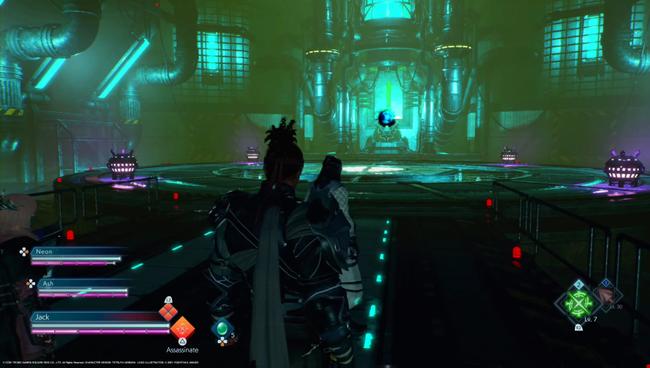
The presentation of these areas is solid and well done, which cannot be said for a lot of the character models, especially the NPCs. In many of the cutscenes that play out, or when you speak to the citizens of Cornelia between missions, you will be subjected to creepy dead-eyed characters that look as generic as Jack.
Monster designs and equipment designs luckily are on the better end of the presentation spectrum with the caveat that you can expect to see a good amount of palette swaps. Particularly when it comes to monsters. Expect to fight the same-looking bats, spiders, sahagins, and more throughout the adventure. At least playing on PlayStation 5, I didn’t notice any performance drops and the game played incredibly smooth, so even though there are repeating monster types, I was usually more concerned with the action taking place.
The real star of Stranger of Paradise, and what people will probably gravitate to most, is its gameplay. This is the game’s greatest strength - and by a long way. Developed by Team Ninja, this spin-off adopts the action-oriented, fast-paced combat that the studio is known for, resembling the developer’s Souls-like Nioh. Encounters are a calculated dance of fierce attacks, perfectly timed parries or blocks, and breaking guards which will trigger gruesome instant-kills.
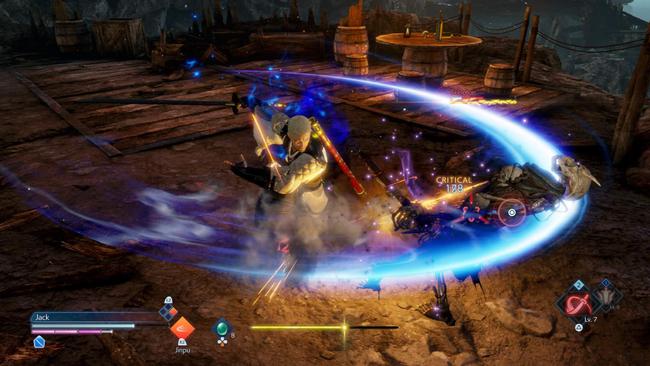
All of that is augmented further by a surprisingly rich job system that adds plenty of options and roles that players can fill. From the start, you have access to eight basic level jobs, each with its own special abilities and skill trees. At the end of each of those trees are additional ‘advanced’ classes that can be unlocked, again with their own abilities, attacks, and trees which end with, you guessed it, even more master classes to unlock! When all is said and done, there are over 20 different jobs to play around with, each with unique skills, strengths, and weaknesses.
Each job will utilize one or many of the types of weapon varieties available to you. The eight options of weapons include series stables like lances, swords and shields, dual-wielded daggers, and magically-focused maces. There’s so much depth here that in the slightly muddled menus it can risk feeling overwhelming, but it’s also incredibly fun to experiment. Equally, it’s rewarding to really stick with and tailor a job to your play style, mastering it to make it your own. From a character progression point, the role-playing elements are strong.
What I appreciate is that if you don’t want to use a class and just want to unlock the more advanced classes, you can spend a resource called “Anima” to level up a class without ever having to actually play it. Anima is limited, but is also a fairly common reward and drop throughout the game. In fact, you can farm Anima easily by replaying levels and missions with the classes you do enjoy using. It’s a smart system that lets players make their own choices.
Picking a class and a weapon is only a small part of what you will need to take into account though. You get so. Much. Loot. As a longtime Action RPG player even I was intimidated by the gratuitous amounts of loot you will get in any given level. It is overwhelming, and trying to parse through the 70+ new pieces of gear you found in that last level can just be tiring. The menus, as mentioned, are functional, but not exactly helpful in the endeavor of staying on top of things.
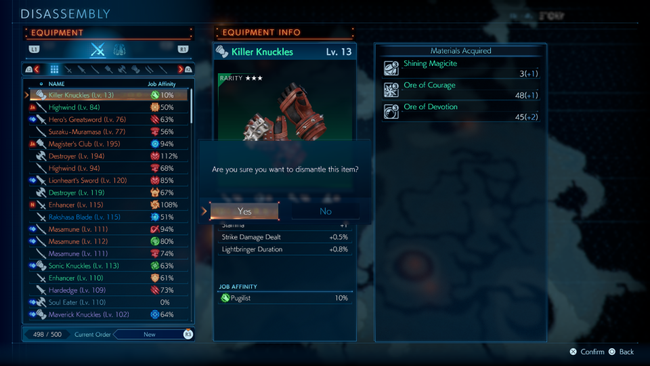
For the average player’s first playthrough, you arguably don’t need to worry about gear and can just rely on the “Optimize equipment” button, dismantling anything that you’re not using. Tailoring and customizing your gear isn’t really required until you get into the post-game grind and harder challenges - but if you fall down that rabbit hole, the equipment meta will become vital.
Playing through the game this way, with the optimized equipment load-outs, on the default “Action” difficulty will keep your basic mobs of enemies as little more than time-wasters while keeping each level’s boss as a decent challenge. However, if you don’t care about the combat and are instead more vested in the story, or more likely, just want to get to the post-game grind, changing the difficulty to Story and Casual mode will let you breeze right through the game in no time. You will find yourself lost and trying to get your barrings longer than the encounters will take, seeing as you can simply run by any group of monsters you encounter on your way to the boss.
After you complete the main story, you will unlock the ‘Chaos’ difficulty, which serves as Stranger of Paradise’s postgame content. The difficulty really ramps up here, and it will require you to utilize the Smithy to improve your gear, equip synergistic abilities, and play smart. Completing these uber-difficult missions will unlock an additional 25 levels for each class, known as Master Levels, which will grant you skill points that can be assigned to various stats to improve your combat prowess. Each of these levels also have additional difficulty levels which can be unlocked to increase the gear level available, up to the max level of 300. These are the same quests and missions that are available that you unlock during the main game, just with higher difficulty which is a bit of a bummer.
One system Stranger of Paradise could’ve used, but lacks, is a transmog system to allow players to change the appearance of pieces of armor or weapons. So much of my time was spent with my characters looking like a mismatched mess instead of the heroes of legend they were touted as, because the gear load-out necessitated by my playstyle was incompatible with, well, looking good. So much of the gear looks cool, but much of the splendor is lost when you have to rely on stats and are punished for wanting to live by the “Rule of Cool”. Being able to change the look of a piece of gear while retaining its stats is so important in this style of game to help personalize your character, and the lack of this functionality was upsetting. Just let me rock a fedora all the time, is that so much to ask?
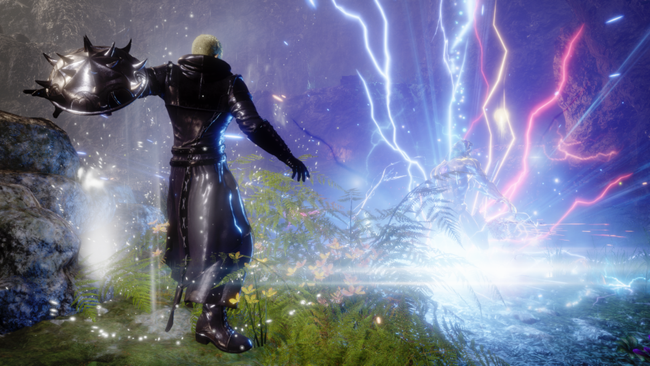
One area that I expect to be a lot of fun, especially with the post-game grind is the multiplayer aspect. During my review, I wasn’t able to spend time actually testing out the multiplayer, but you are able to tackle both main story levels in addition to sidequests with up to two friends. Having played both, this is a much better experience compared to other multiplayer action RPGs that Square Enix has released recently. I hope that they continue to add more quests and locations to enjoy in multiplayer, a versus mode could be pretty cool too!
Stranger of Paradise Final Fantasy Origin is undoubtedly a fun chaotic romp that will delight number crunchers and action RPG aficionados. Even though I found the characters and some of the story lacking, I still had a really good time testing out new jobs, exploring the various levels, seeing all the easter eggs, and devising strategies to tackle the level bosses. I’m looking forward to grinding gear with friends and finding out what the future holds with this new spinoff series of Final Fantasy.